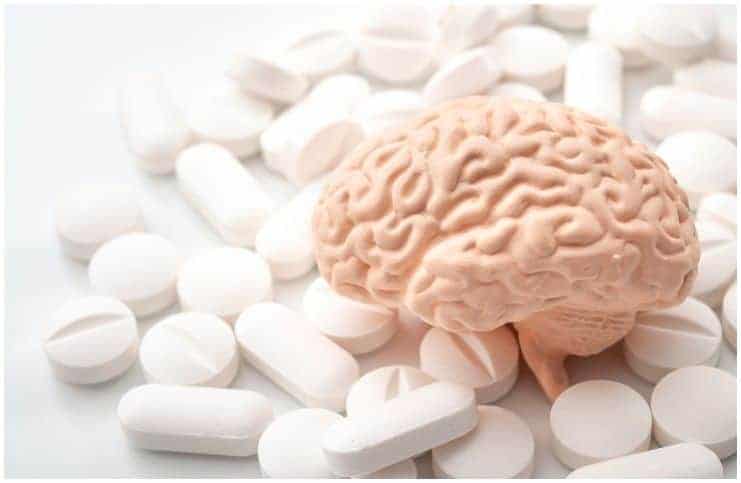E401 Pill vs Adderall – detailed comparison:
E401 Pill
The pill with the imprint E 401 is orange, round and contains amphetamine and dextroamphetamine 20 mg. It is manufactured by Sandoz Inc, a global leader in generic pharmaceuticals and biosimilar companies.
Amphetamine and dextroamphetamine are central nervous system stimulants that affect chemicals in the brain and nerves which contribute to hyperactivity and impulse control.
This combination medication is used to treat ADHD (attention deficit hyperactivity disorder).
ADHD is a neurologically based behavioral condition that affects both adults and children. More than 5 million children in the US have been diagnosed with ADHD, according to the CDC.
Children with attention deficit hyperactivity disorder often:
- interrupt others;
- have a hard time paying attention;
- have trouble taking turns;
- daydream a lot;
- speak and act without thinking;
- cannot play quietly;
- talk too much;
- fidget or squirm;
- seem to be in constant motion;
- forget things;
- are easily distracted from play;
- seem like they are not listening.
Adderall
It is a brand-name medication that belongs to a class of drugs called central nervous system stimulants.
This medication contains amphetamine and dextroamphetamine. Other ingredients include the following – cellulose, gelatin, magnesium stearate (from vegetable source), and silicon dioxide.
Currently, it is one of the most popular treatments for attention deficit hyperactivity disorder in both adults and children. It was introduced to the United States market in 1996 by Richwood Pharmaceuticals.
Mechanisms of Action
It stimulates neurotransmitters (norepinephrine, dopamine, and epinephrine) in the brain. This effect can flood the patient with feel-good chemicals, leaving him feeling energized and alerted.
Moreover, the medication increases heart rate and blood pressure in people who take it. Also, it triggers the release of histamine and serotonin (a neurotransmitter that sends signals between the nerve cells).
Uses
It is prescribed to treat the attention deficit hyperactive disorder (ADHD), attention deficit disorder (ADD), and narcolepsy (a neurological disorder that affects the control of sleep and wakefulness).
In addition, the medication is commonly referred to as a “study drug” and many students frequently use it to increase their level of productivity and focus. According to recent statistics, 1 in 5 students uses ”study drugs,” better known as ”smart drugs.”
Furthermore, this central nervous system stimulant can suppress appetite, and more and more people who want to lose weight fast and without any lifestyle changes abuse the drug as a diet pill.
Nevertheless, using the medication for weight loss can result in severe side effects, such as – stroke, psychosis, cardiac arrest, addiction, and death.
Dosage
The medication comes in two forms: Adderall XR and Adderall. The main difference between the two meds is the duration of action. Adderall XR lasts approximately 7 to 9 hours, while plain Adderall lasts about 3 to 5 hours.
The dosage of this medication is individualized, therefore, your dose will depend on why you are taking it, and on your response to the medication. Your doctor will choose your dosage.
Side Effects And Precautions
Common side effects may include:
- vomiting;
- skin rashes;
- migraines;
- nausea;
- agitation;
- insomnia (sleep problems);
- anxiety.
Rare side effects may include:
- restlessness;
- nervousness;
- weakness;
- excitability;
- irritability;
- dizziness;
- fear;
- headaches;
- blurred vision;
- dry mouth;
- stomach pain;
- unpleasant taste in the mouth;
- constipation;
- diarrhea;
- hair loss;
- fever (high temperature);
- tremor;
- loss of appetite;
- impotence;
- weight loss;
- palpitations;
- increased heart rate;
- increased blood pressure;
- difficulty having an orgasm;
- loss of interest in sex.
Alcohol
Combining alcohol with this central nervous system stimulant may lessen the depressive effects of alcohol, hence, taking the medication before drinking alcoholic beverages will allow you to drink more.
Addiction
Since it is a very powerful central nervous system stimulant, this medication will increase dopamine production to levels that are unnatural to humans.
This, ultimately, may leave you to want more and it can be habit-forming. Also, over time, that intensity wears off and you may require higher doses.
The psychological, physical, and behavioral symptoms can include:
- nervousness;
- fast thoughts;
- being fearful of the prospect of not having the medication;
- crushing and snorting the medication;
- talkativeness;
- spending a substantial amount of time finding the medication;
- increased anxiety;
- vomiting;
- nausea;
- a sense of grandiosity and intense well-being.
Drug Interactions
Types of medications that are known to negatively interact with central nervous system stimulants include:
- blood thinners, like – warfarin (Coumadin);
- diuretics (water pills), like – furosemide (Lasix);
- blood pressure medications, like – doxazosin (Cardura), alfuzosin (Uroxatral), and prazosin (Minipress);
- premsyn pms;
- diet supplements called L-glutamine or glutamic acid;
- prescription pain medications, such as – propoxyphene (Darvon) and meperidine (Demerol);
- fluconazole;
- medications used to treat bipolar disorder (a mental illness that brings severe high and low moods and changes in sleep) or schizophrenia, like – haloperidol (Haldol);
- heart medications, like – beta-blockers, such as – (Lopressor, Toprol XL), labetalol (Normodyne), and atenolol (Tenormin);
- orajel;
- over-the-counter cold and cough medicines and antihistamines which contain decongestants;
- rapaflo;
- seizure medications, like – phenytoin (Dilantin), phenobarbital (Solfoton, Luminal), and ethosuximide (Zarontin).
Bottom Line – E401 Pill vs Adderall
In conclusion, both medications contain the same active ingredients (amphetamine and dextroamphetamine), however, E401 pill is the generic form and Adderal is the brand form of the medication.
Image credit – Shutterstock
READ THIS NEXT: Xyzal vs Benadryl
References https://www.ncbi.nlm.nih.gov/pmc/articles/PMC1524735/ https://www.medscape.com/viewarticle/446508 http://www.uky.edu/~addesa01/documents/AdderallisDefinitelyNotaDrug.pdf
